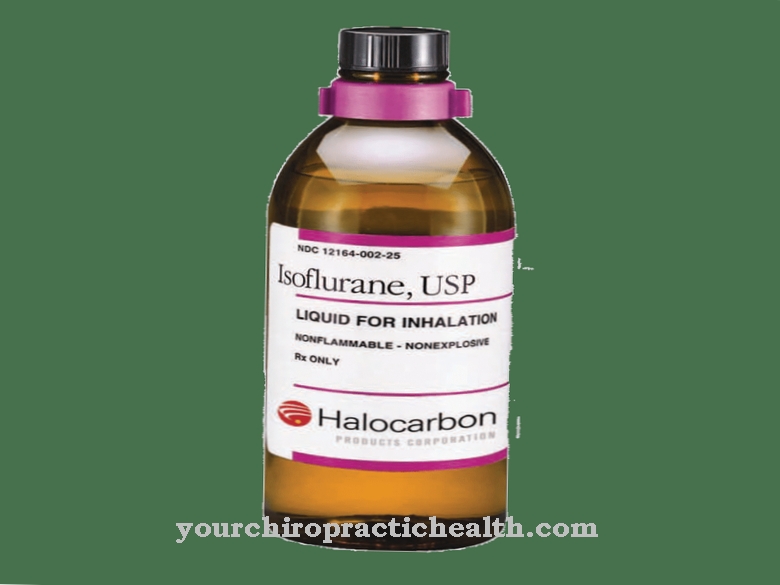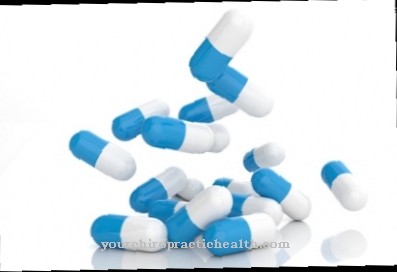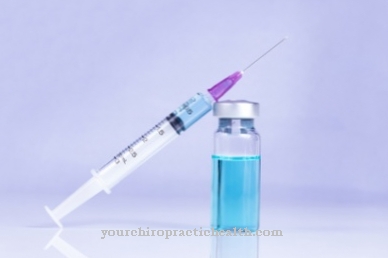As Dipyridamole is an active ingredient from the group of platelet aggregation inhibitors. The drug is primarily used for the prophylaxis of strokes.
What is Dipyridamole?

Dipyridamole belongs to the group of antithrombotics. The drug is used to prevent the formation of thrombi (blood clots) and thus to prevent strokes.
Dipyridamole was first used in 1959. The drug was used to treat coronary artery disease (CHD). In the following years there was a dilating (widening) effect on the coronary vessels. Finally, dipyridamole was also used as a platelet aggregation inhibitor.
Nowadays, a combination of dipyridamole and acetylsalicylic acid (ASA) is usually used to counteract relapses after a stroke, which occur in the context of cerebral ischemia (TIA).
However, the greater benefit of this combination therapy compared to a single administration of acetylsalicylic acid is considered controversial among medical professionals. According to studies, a stroke occurs 1.47 times more often with combination therapy than with ASA alone. In addition, side effects such as headaches are more common.
Pharmacological effect
Dipyridamole works by widening human blood vessels and preventing platelets (thrombocytes) from clumping together. This process is also known as aggregation in medicine. With this procedure it is possible to prevent narrowing or occlusion of the blood vessels.
Dipyridamole has the ability to block the transport of the nucleoside adenosine. This gives the synaptic cleft more adenosine. Via G-protein-coupled processes, this leads to relaxation of the muscles, which in turn causes the blood vessels to expand.
Dipyridamole develops its vasodilating effect mainly in the coronary arteries. These are responsible for supplying the heart muscle. Dipyridamole is no longer used for the prophylaxis or therapy of angina pectoris, however, since the coronary vessels in most cases automatically expand to the maximum so that more blood can reach the heart muscle. The use of dipyridamole would also expand healthy coronary arteries, which increases their blood flow. As a result of this process, however, the diseased vessels receive less blood, which further increases the insufficient supply of the diseased heart muscle area. Doctors refer to this process as the steal effect.
In the blood, dipyridamole binds to plasma proteins to 99 percent. The active ingredient is metabolized via the liver. The average plasma half-life is 40 minutes. Dipyridamole is eliminated from the body in the stool.
Medical application & use
Dipyridamole is usually used together with acetylsalicylic acid to prevent strokes that are caused by a vascular occlusion in the brain. An important area of application of the active ingredient is also medical diagnostics. Dipyridamole is used in myocardial scintigraphy and stress echocardiography.
With the administration of dipyridamole, a drug load on the heart can be achieved in the context of controlled conditions such as blood pressure measurement or EKG monitoring. In this way it is possible to assess the blood flow in the heart muscle using single-photon emission computer tomography or the wall movements using sonography (ultrasound examination).
Dipyridamole is taken orally. For this purpose, capsules are taken daily.
Risks & side effects
In some cases, the use of dipyridamole can cause undesirable side effects. These are primarily drowsiness, headaches, muscle pain, hot flashes, nausea, vomiting, rapid heartbeat, reddening of the skin and low blood pressure.
Seldom sufferers also suffer from exacerbated angina pectoris or hypersensitive reactions such as hives and rashes on the skin. The tendency to bleed may increase during surgery.
In the case of epidural or spinal anesthesia, it is advisable to stop dipyridamole 48 hours before the procedure if the substance is combined with acetylsalicylic acid. However, the administration can be continued immediately after the operation.
If dipyridamole is discontinued too quickly, there is a risk of angina pectoris attacks and, in the worst case, even a heart attack.
Treatment with dipyridamole should not take place if the patient is hypersensitive to the drug. Dipyridamole therapy must also be avoided in the case of severe heart disease. These include recent heart attacks, severe heart failure, cardiac arrhythmias, angina pectoris attacks, narrowing or clogging of the aortic valves, uncontrolled disturbances in blood flow and circulatory failure.
During pregnancy, consultation with the treating doctor must be made before the use of dipyridamole. The same goes for breastfeeding. Dipyridamole is not suitable for children.
When using dipyridamole with other drugs, undesirable interactions should be considered. For example, xanthine derivatives, which include theophylline or the caffeine found in coffee, can weaken the positive effects of the platelet aggregation inhibitor. If dipyridamole is combined with blood thinners such as coumarins, this increases the effectiveness of the agent. In addition, the effect of high blood pressure preparations is increased by the administration of dipyridamole.

















.jpg)







.jpg)


